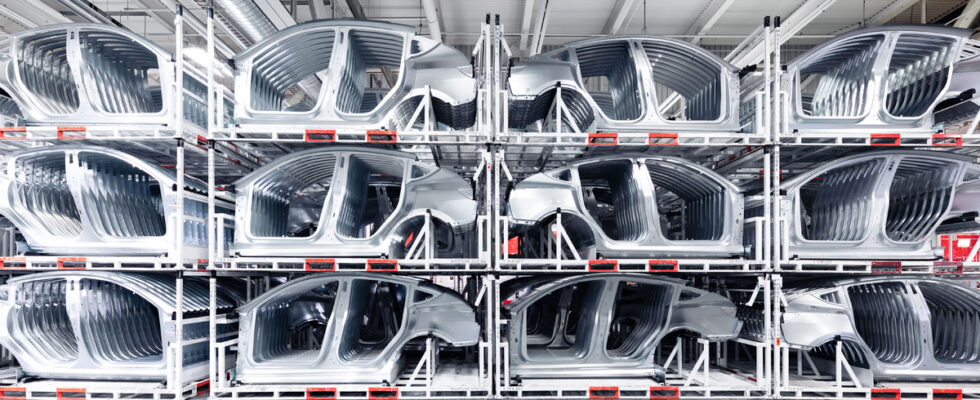Electric cars remain on average more expensive to purchase than their gasoline, diesel, or even plug-in hybrid equivalents, but this situation may not last. According to the American consulting firm Gartner, production cost parity could be achieved more quickly than expected.
“The new players in the automotive industry want to fundamentally redefine the status quo in the automotive sector”explains Pedro Pacheco, vice president of research at Gartner. “They have brought innovations that simplify production costs, such as centralized vehicle architecture or the introduction of giga-castings that help reduce manufacturing costs and assembly time, which legacy automakers do not had no choice but to adopt in order to survive.”
Giga-casting is a process used by Tesla for its Model Y and since taken up by other manufacturers, which consists of molding very large chassis elements with huge presses, previously made up of numerous parts assembled by welding.
The decline in the production costs of electric vehicles will therefore be even faster than that of the cost of their batteries, explains Gartner. The firm estimates that electric cars should cost less to produce than their internal combustion engine equivalents by 2027.
This is an average and certain electric models can already be considered more accessible than their thermal equivalent. This is particularly the case for high-performance cars, since high power can easily be obtained electrically. Conversely, the development of a large internal combustion engine is very expensive for thermal models, especially against a backdrop of tougher anti-pollution standards. In China, the price of electric cars is already approaching that of thermal models, in particular thanks to the massive use of less expensive LFP batteries.
However, in the city car segment, particularly popular in Europe, cost parity is still far from being a reality. The new Renault 5 E-Tech electric is therefore expected at a purchase price of around €25,000, which remains higher than that of a Clio hybrid E-Tech 145 (from €23,800) for example. The latter is however more powerful, larger, better finished and should be better equipped at entry level.
The cost of repairs would soar
But these new production methods are not only positive. Thus, they make repairs after an impact more difficult. “Gartner predicts that by 2027, the average cost of a body and battery repair in a serious accident will increase by 30%”explains the firm. “As a result, vehicles involved in a collision may be more likely to be totally destroyed, as the cost of repairs may be greater than their residual value.”.
Mechanically, we should therefore expect an increase in insurance premiums. “According to Gartner, rapidly reducing BEV production costs should not come at the expense of increasing repair costs, as this could lead to a negative consumer backlash in the long term.”
Furthermore, regarding the many startups that have launched into electric vehicles, “Gartner predicts that by 2027, 15% of companies […] created over the last decade will be bought out or go bankrupt.” It is indeed very difficult to move from a concept to reality, even with an attractive product. Fisker, for example, is now under threat, and is currently seeking help from Nissan.
